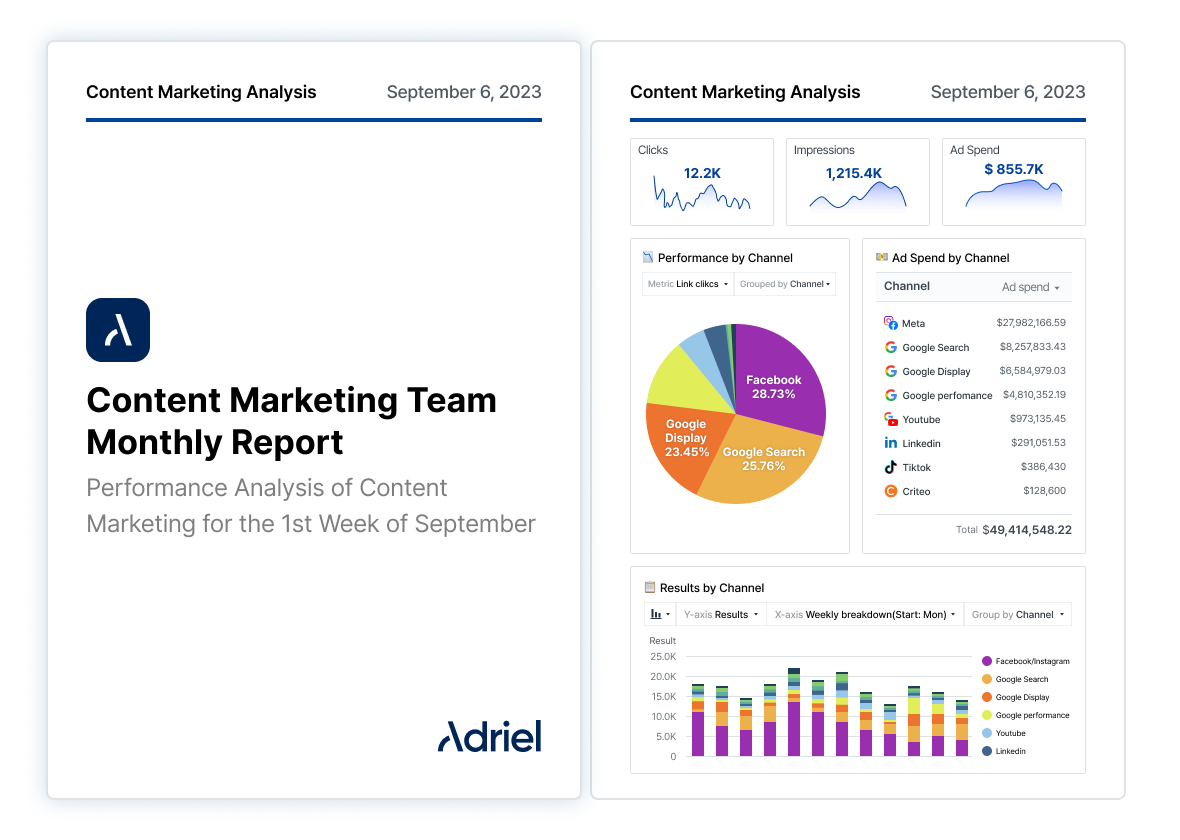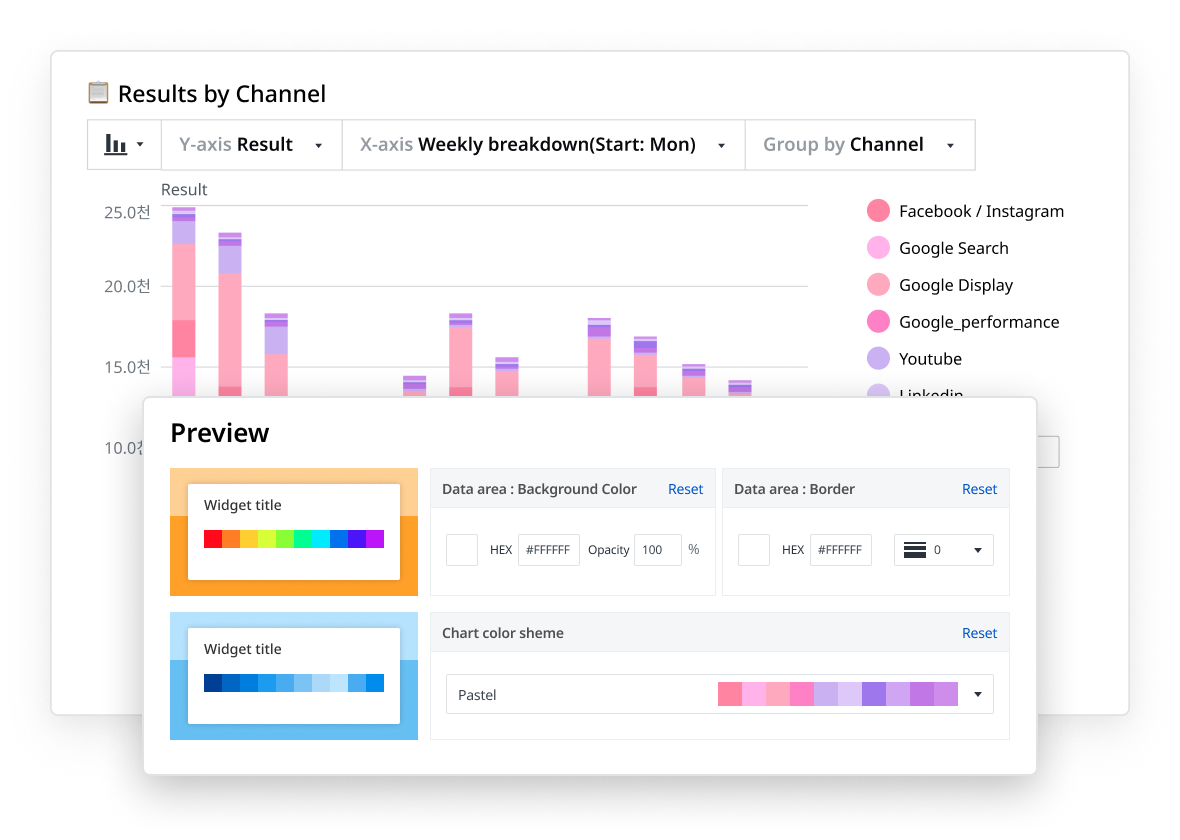Refer a partner and get paid! Earn 20% of all qualifying subscriptions referred to our team 👉

Learn More
Ditch Excel spreadsheets and see Google Analytics 4 and LinkedIn Ads data side-by-side on one dashboard.
Map out which LinkedIn advertising campaigns lead to conversions and how.



Analyzing GA4 and LinkedIn ads is important for accurate attribution and conversion tracking. When you combine these two data sources, you can better understand the entire customer journey and user behavior from clicking on an ad to visiting your website to checking out.
On Adriel, you can easily map out important LinkedIn Ad performance metrics to GA4 data like sessions and events. Attribute conversions to specific campaigns, keywords, or ad creatives. Make better decisions, allocate budgets accurately, and identify opportunities for improvement.
You can create a LinkedIn ads report in minutes on Adriel. Just choose your data source (i.e. your LinkedIn ads account) from a drop-down list, and start using our ready-made templates or customize your own with interactive widgets and graphs. Your data will automatically flow into the dashboard within minutes.
No coding and technical knowledge required.

Sign up for Adriel with your email after your demo.
You can then select a pricing plan that suits your needs.

Adriel supports integrations with up to 650+ data sources, including ad platforms, social media channels, analytics tools, and eCommerce platforms, such as:
And if you don’t see an integration that we support natively, we can create custom integrations just for you.

Use our ready-made templates to instantly see all your KPIs in minutes.
Or, start from a blank page and choose your data visualization widgets and graph types.

If you’re a marketing agency, you want to be able to present different sets of information to different stakeholders.
Set up different views for each role or client on Adriel with different access restrictions in just a few clicks.

Need paid media reports to share with clients or the C-suite team? Determine your brand visuals, colors, and client logos, and download reports as PDFs or CSVs or get live links in minutes.
The best way to analyze your LinkedIn Ads performance is to use an all-in-one dashboard template that puts your advertising data against GA4 data. Here’s how this looks like:






A comprehensive look at how many users your LinkedIn Ads campaigns drove to your website. Key metrics include:
A detailed analysis of interactions (events) on your website due to your LinkedIn Ads. Key metrics include:


A breakdown of how many website sessions your LinkedIn Ads generated. Key metrics include:


Finally, a report of conversions generated by your LinkedIn ads. Key metrics include:


See all your ad creatives in one place on our LinkedIn Ads Creatives dashboard template. Monitor ad spend, impressions, link clicks, CTR, CPC, and CPM for each ad creative in real-time. Automate your entire creative data analysis process for PPC campaigns.




When reporting Meta Ads, you will want to visualize Instagram Ads and Facebook Ads performance side-by-side to understand how each platform is contributing to your digital marketing goals. Here’s how it looks like on Adriel’s report template:





Integrate all your paid ad channels’ results into one marketing reporting dashboard. Curious to know how your Meta, Google, or TikTok Ads are performing? Connect all of these platforms to Adriel, and in less than 5 minutes, show all of your paid campaign results in one unified dashboard. See our integrations page for more information.


You can start from a blank page to create a marketing reporting dashboard, but what if you don’t have time? Our extensive pre-made marketing reporting dashboard library has everything you might need. Try Adriel, and you’ll have more time to research ways to increase conversion or optimize your landing pages.
Our software was expertly designed with powerful functions for marketers. But everything can be customized. Adriel’s flexibility allows you to change all aspects of the dashboard design and appearance. Impress your clients or executives with a professional marketing reporting dashboard report for an expert brand image.













.png)

You won’t need to go through the complicated process of exporting data from LinkedIn on Adriel’s LinkedIn report template.
Just connect your LinkedIn ad account from a drop-down menu and all your data will automatically start flowing into the dashboard in minutes.
No exporting or importing needed. No codes involved.

LinkedIn offers multiple ad formats, each with its own use case. The “best” format will depend on your ad campaign goal, budget, and company culture.
Choosing the right ad format is not just about visibility; it’s about selecting a medium that aligns with your campaign objectives, resonates with your target audience, and amplifies your message effectively.
Always align your choice with your campaign goals, whether it’s brand awareness, lead generation, or driving event sign-ups, and ensure your content is not only seen but also leaves a lasting impact.

